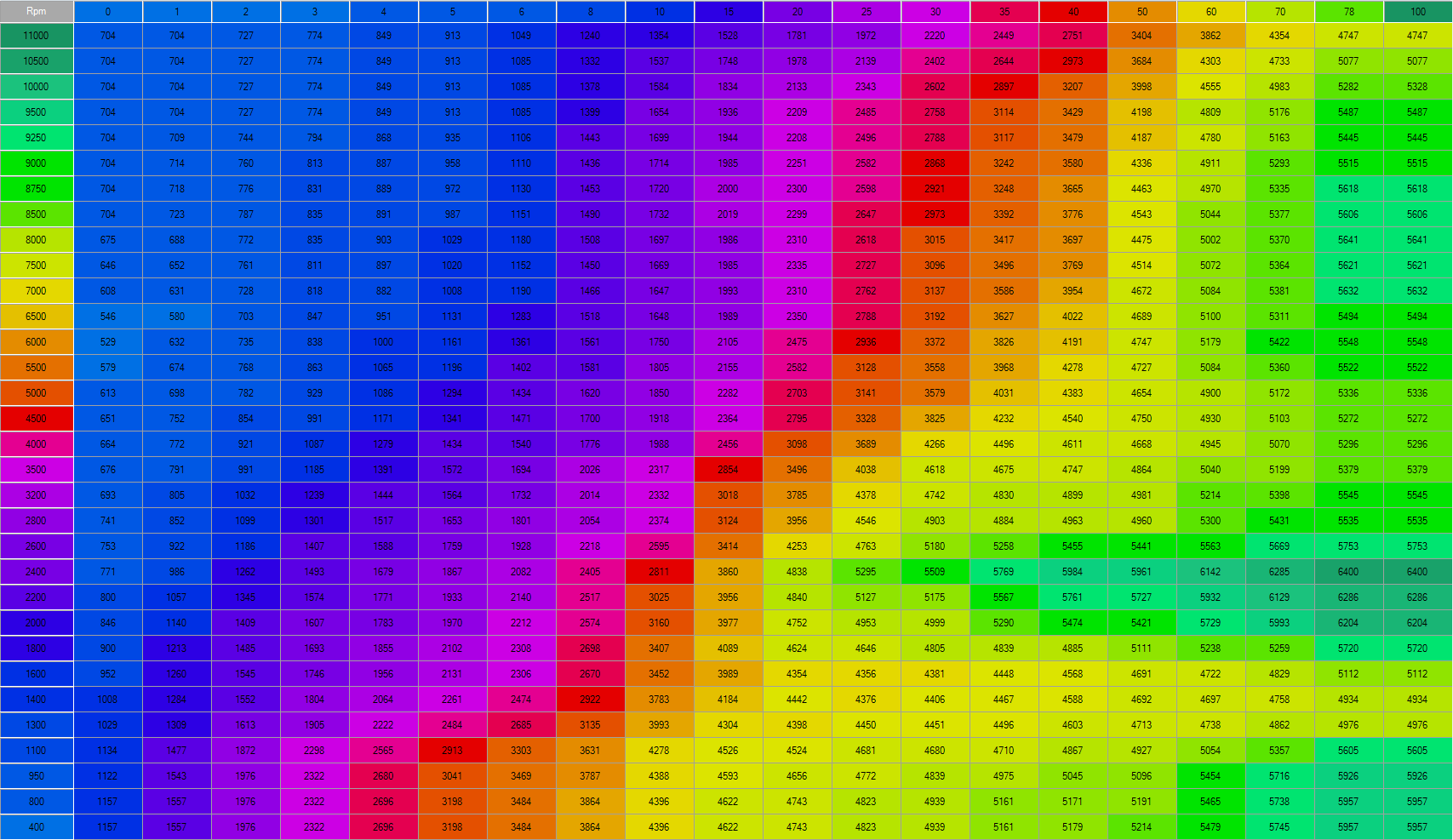The VE map describes the pumping efficiency of the engine during steady state conditions. This is used to estimate the airmass charge and, consequently, the fuel charge very effectively as long as conditions remain steady. Transient, or changing, conditions such as tip-in or tip-out maneuvers have special of the fuel deliver calculations. If the throttle is rapidly moved in either direction, the cylinder-s can experience a slight change in fuel delivery. The source of this change in fuel delivery is the intake system itself. The small Stage 1 tuning of fuel that sticks to the walls of the intake port is constantly making its own contribution to overall fueling of the cylinder. Although the ECU controls the fuel injector, there is no direct control over the film of fuel stuck to the port walls. During an acceleration event, airflow in the port is rapidly increased. This increase in airflow tends to evaporate the wall film of fuel on the port. If this wall film reduces in magnitude, its overall contribution to the cylinder fueling is also reduced. The net result is a slightly leaner fuel mixture being delivered to the cylinder during acceleration. Left unchecked, the leaner mixture leads to a reduction in torque output until balance is restored to the wall film contribution. If the driver applies an increase in throttle, he is expecting a corresponding increase in torque output. A momentary lean condition is in direct conflict with this request, so a solution must be found. Some extra fuel must be injected into the to offset this temporary wall film reduction and cylinder enleanment. This extra fuel shot is the EFI equivalent of a carburetor’s accelerator pump. To a lesser extent, there is also a need to offset the opposite condition during deceleration. When the throttle is closed and airflow drops dramatically, the fuel film can grow significantly on the port wall. This increased fuel film mass on the walls translates directly into an increase in fuel mass delivered to the cylinders as it evaporates. Carbureted systems simply allow the engine to run richer momentarily. Better emissions and fuel economy can be achieved by reducing this effect if the controls are present to do so. There are several different methods that various ECUs can use to apply the necessary acceleration enrichment. The simplest method is to provide additional fuel delivery based on changes in the TPS sensor or MAP sensor output. Since it is the opening of the throttle in the first place that starts the chain reaction that results in different air and fuel delivery to the cylinder under changing conditions, the TPS sensor can be used as a predictor of upcoming changes. If a positive change in TPS position is detected, it’s a fair conclusion that some amount of additional fuel must be added to offset the change in wall film contribution. In a carburetor, this is accomplished by the mechanical linkage between the throttle arm and accelerator pump. In a simple TPS-based acceleration enrichment strategy, it is accomplished by the graph above right that shows additional fuel mass as a function of TPS rate of change. The rate of change is usually displayed in degrees of throttle rotation per second. L.arger changes in throttle angle correlate with the need for even greater additional fuel mass to offset the evaporating wall film. Just like the throttle angle, the ECU can also monitor manifold pressure to detect highly dynamic changes in load. If the MAP sensor detects a rapid increase, it is also safe to assume that fuel mass must be increased to go along with it. A table of delta-MAP, or MAP rate of change, can also be used to estimate the necessary fuel mass increase. Some systems employ both a delta-MAP and a delta-TPS table that are summed to provide the total additional fuel mass during transient conditions. A more elegant method of calculating the necessary fuel addition is by actually modeling the behavior of the fuel wall film. For each injection event, a percentage of the fuel injected sticks to the port wall instead of being carried directly into the cylinder. This percentage is referred to as “X” and varies significantly with temperature and load. At low temperatures, the percent of fuel effectively condensing on the cool walls is much greater with each shot. As the engine and port walls warm up, fuel is less likely to stick and the X component decreases as seen in the top graph below. Likewise, changes in load or airflow will also affect the amount of fuel being deposited upon the port walls. Once the fuel is deposited upon the port wall, it will evaporate over time. The rate at which it evaporates also depends upon temperature and load. Higher temperatures help evaporate the film quicker, as does lower manifold pressure. The time constant for evaporation is referred to as “T” or the Greek letter Tau. A larger Tau value means faster evaporation. Another way to think of Tau is the portion of fuel delivered to the cylinder directly from the wall film.










